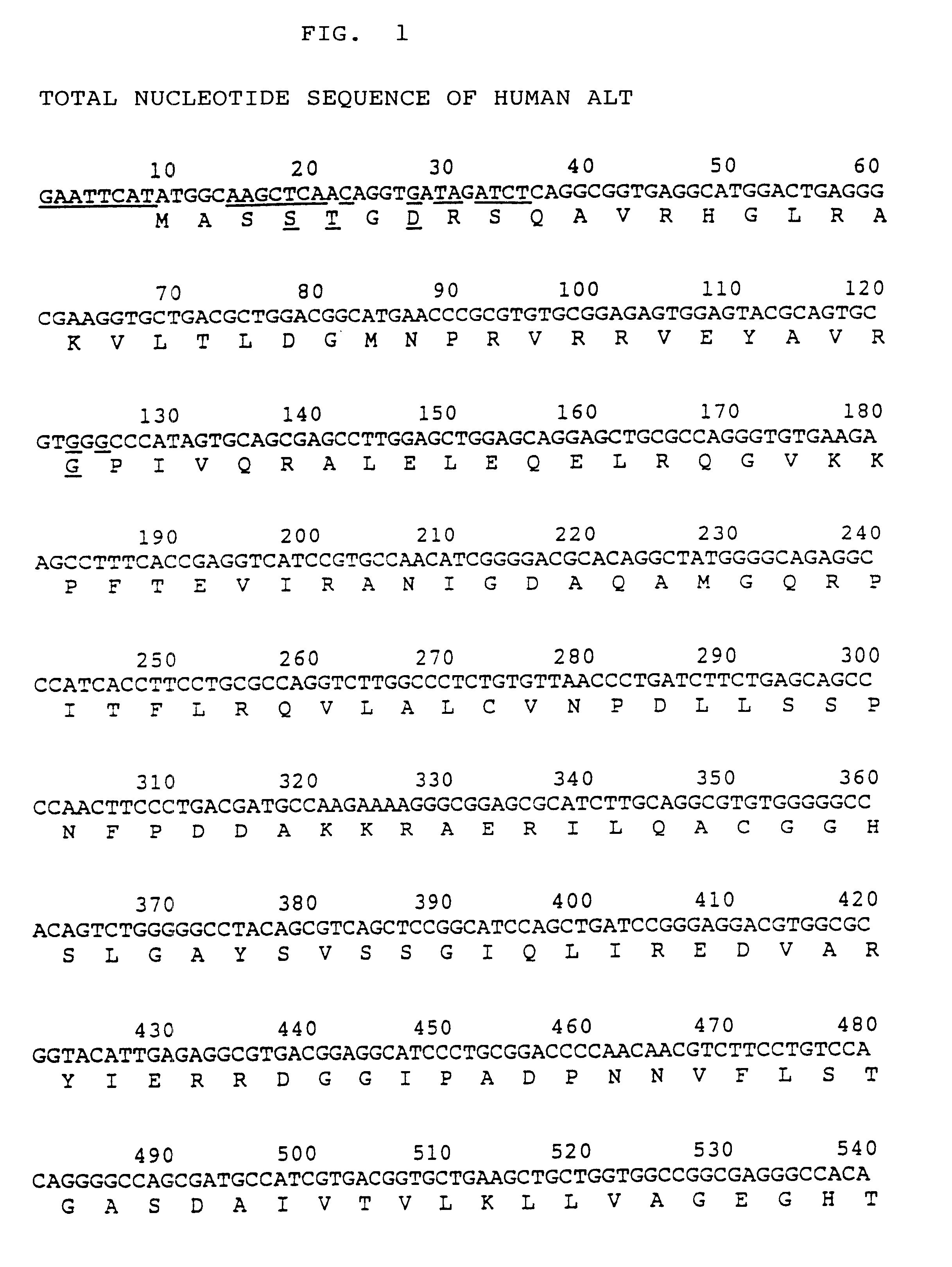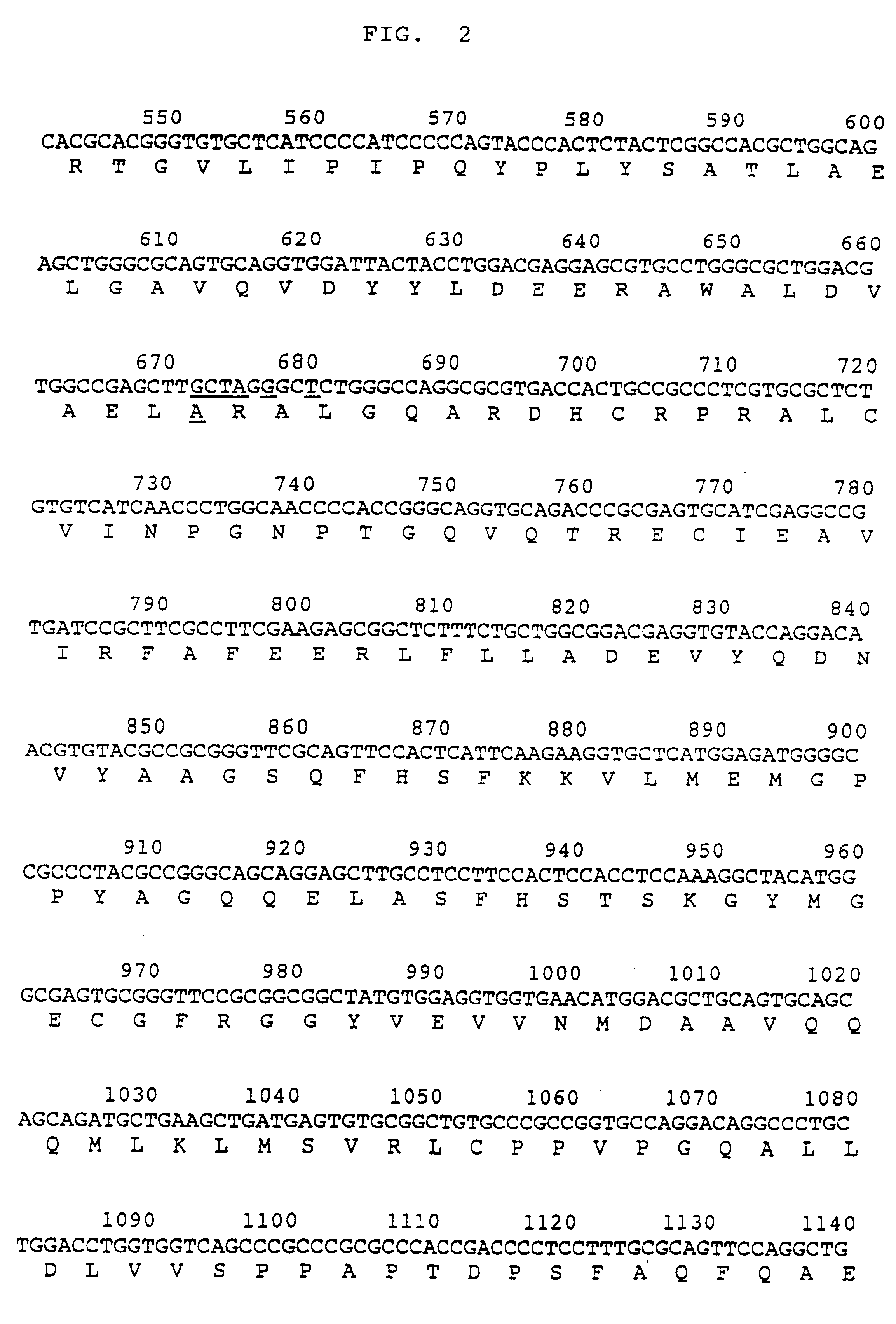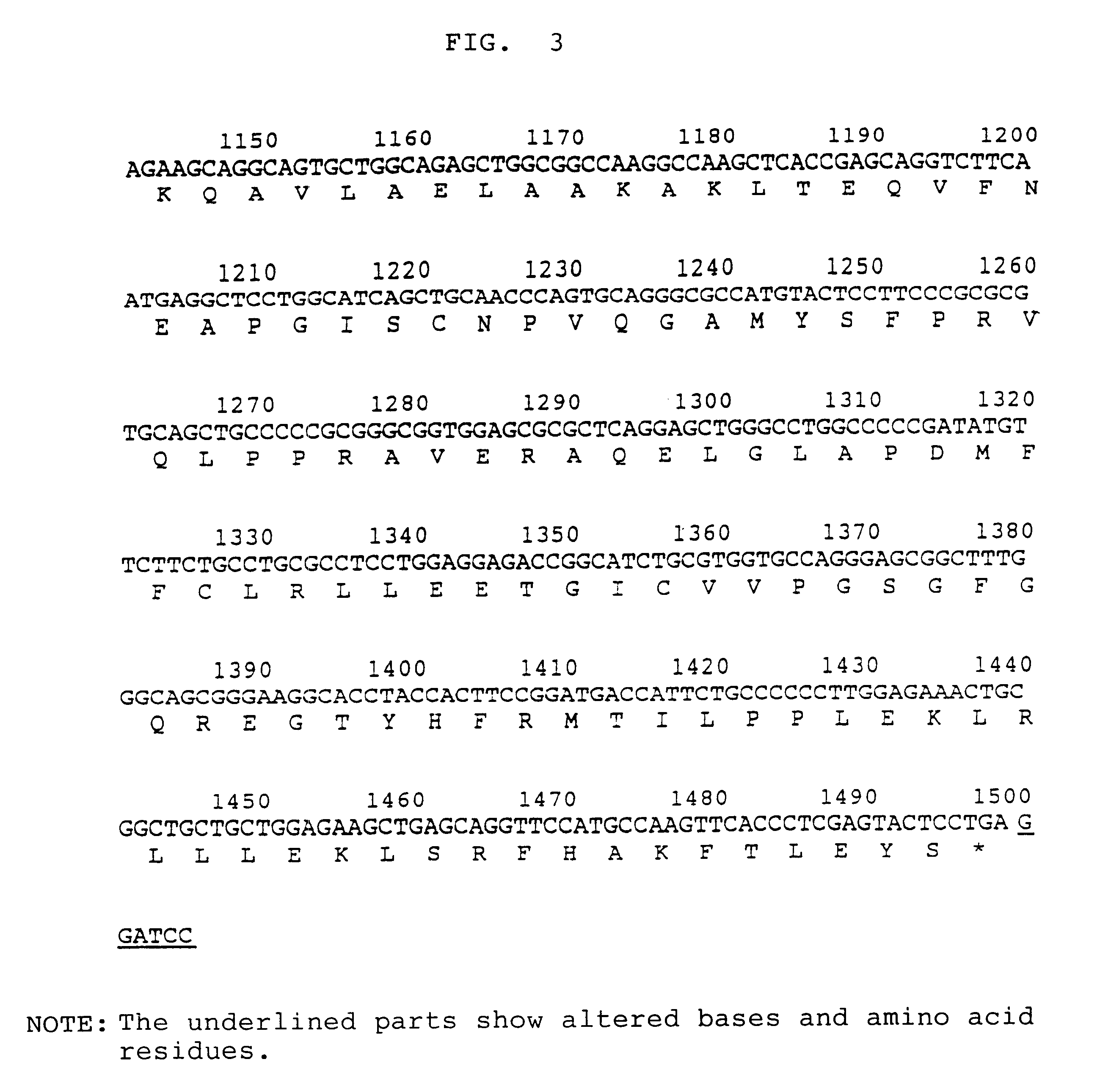Process for producing activated human ALT
a technology of human alt and activation, which is applied in the direction of enzymology, organic chemistry, transferases, etc., can solve the problems of standardization such as minimization, not being able to report the expression of the alt protein maintaining a sufficient activity, and not being able to achieve the effect of minimization and differen
- Summary
- Abstract
- Description
- Claims
- Application Information
AI Technical Summary
Problems solved by technology
Method used
Image
Examples
example 1
(a) Amplification of Partial Fragments of an Altered-type Human ALT Gene by PCR
Eight kinds of primers shown in FIG. 4, i.e. PF4-11, PFA-1 (SEQ ID NO:3) (SEQ ID NO:5), PF11 (SEQ ID NO:7), PFA-11 (SEQ ID NO:8), PF21 (SEQ ID NO:9), PFA-21 (SEQ ID NO:10), PF31(SEQ ID NO:12) and PFA-41 (SEQ ID NO:13), were obtained by DNA-synthesizing and four kinds of partial gene fragments were amplified by PCR with PF4-11 and PFA-1, PF11 and PFA-11, -PF21 and PFA-21, and PF31 and PFA-41, respectively, using a pHGT-39 containing a cloned human ALT gene as a template.
Of the above described primers, PF4-11, PF11, PF21 and PF31 were sense primers, PFA-1, PFA-11,. PFA-21 and PFA-41 were antisense primers, and they were designed on the basis of the nucleotide sequence of the human ALT. In the row above PF4-11 (SEQ ID NO:4), and the rows under PFA-1 (SEQ ID NO:6) and PFA-21 (SEQ ID NO:11), amino acid sequences encoded by them are shown. The underlines in nucleotide sequences of primers indicate the replaced ...
PUM
| Property | Measurement | Unit |
|---|---|---|
| Length | aaaaa | aaaaa |
| Molar density | aaaaa | aaaaa |
| Molar density | aaaaa | aaaaa |
Abstract
Description
Claims
Application Information
 Login to View More
Login to View More - R&D
- Intellectual Property
- Life Sciences
- Materials
- Tech Scout
- Unparalleled Data Quality
- Higher Quality Content
- 60% Fewer Hallucinations
Browse by: Latest US Patents, China's latest patents, Technical Efficacy Thesaurus, Application Domain, Technology Topic, Popular Technical Reports.
© 2025 PatSnap. All rights reserved.Legal|Privacy policy|Modern Slavery Act Transparency Statement|Sitemap|About US| Contact US: help@patsnap.com



